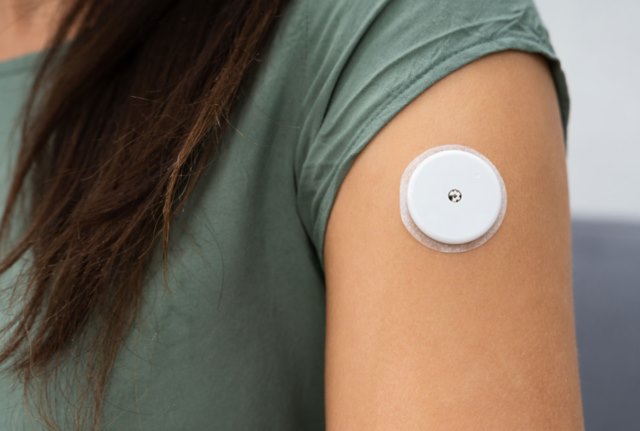The Future of Diabetes Management is Here: Embracing CGM and Its Possibilities

For people living with diabetes, juggling blood sugar levels can feel like a constant dance on a tightrope. Blindly relying on finger pricks offers limited glimpses, leaving you guessing about the intricate tango your glucose performs throughout the day. But what if you could see the whole performance, dips and all, in real time? Enter the CGM device: your personal diabetes detective, offering a continuous stream of glucose data to empower informed decisions and ultimately, a healthier you.
What is a CGM Device?
Imagine a tiny sensor nestled under your skin, whispering secrets of your blood sugar every few minutes. That’s the CGM (Continuous Glucose Monitoring) device in action. It seamlessly integrates with a transmitter, sending glucose readings wirelessly to a receiver or smartphone app, painting a vivid picture of your glucose trends. No more finger pricks, just a constant flow of data, empowering you to understand your body’s unique rhythm.
How Does This Magic Work?
The CGM sensor uses a biocompatible enzyme that reacts with interstitial fluid, mimicking the glucose concentration in your bloodstream. This reaction generates a tiny electrical current, transmitted to the receiver and translated into glucose readings. It’s like having a miniature glucose meter permanently stationed beneath your skin, whispering updates like a loyal sidekick.
Cost: The Elephant in the Room
CGM affordability can be a hurdle. In the US, the cost can range from $300 to $700 per month, depending on the brand and insurance coverage. But fear not, India offers hope! The FreeStyle Libre, a popular CGM system, boasts a significantly lower price tag of around ₹4,000 per sensor, lasting for 14 days. This translates to roughly ₹285 per day, a much more manageable cost for many.
Who Gets to be a CGM Detective?
CGM is primarily recommended for people with type 1 diabetes who require frequent insulin adjustments. However, type 2 diabetics can also benefit, especially those with:
- Unpredictable blood sugar swings
- Frequent hypoglycemia
- Difficulty achieving glycemic control
- Pregnant women with diabetes
The Cheapest CGM: Myth or Reality?
While the FreeStyle Libre currently holds the crown for affordability in India, the cost of CGM technology is constantly evolving. New players are entering the market, and advancements in sensor technology promise even lower prices in the future.
Ouch! Does CGM Hurt?
The insertion process is similar to a thin needle prick, and most users report minimal discomfort. The sensor is then held in place with a strong adhesive patch, making it comfortable for everyday wear.
How Long Can You Play Detective?
Depending on the CGM system, sensor life can vary from 7 to 14 days. After that, it’s time for a fresh sensor, ensuring continuous monitoring and avoiding data gaps.
Do Type 2 Diabetics Need a CGM?
While not a standard recommendation, CGM can be a valuable tool for many type 2 diabetics. The real-time data can help them understand their individual glucose patterns, optimize insulin therapy, and ultimately, achieve better glycemic control.
Does CGM Qualify You for a Detective License? (I mean, CGM Coverage)
CGM coverage varies depending on your insurance plan and country. In the US, some Medicare plans offer partial coverage for CGM devices, while India is still evolving its coverage landscape. It’s always best to check with your insurance provider for specific details.
The Takeaway: A Brighter Future with CGM
CGM technology is revolutionizing diabetes management, offering transparency and empowerment like never before. While cost can be a barrier, advancements and increasing availability are painting a brighter future. Whether you’re a seasoned type 1 detective or a curious type 2 seeking a clearer picture, CGM might just be the key to unlocking a healthier, more confident you.
Sources:
- American Diabetes Association: https://diabetes.org/sites/default/files/2020-06/CGMGuidelines.pdf
- National Institute of Diabetes and Digestive and Kidney Diseases: https://pubmed.ncbi.nlm.nih.gov/12663589/
- FreeStyle Libre India: https://www.abbott.in/media-center/press-releases/freestyle-libre-system-in-india-providing-real-time-continuous-glucose-monitoring-for-people-with-diabetes.html




